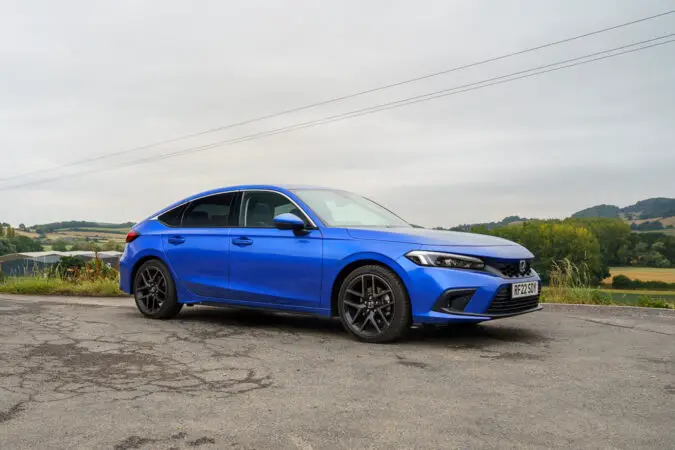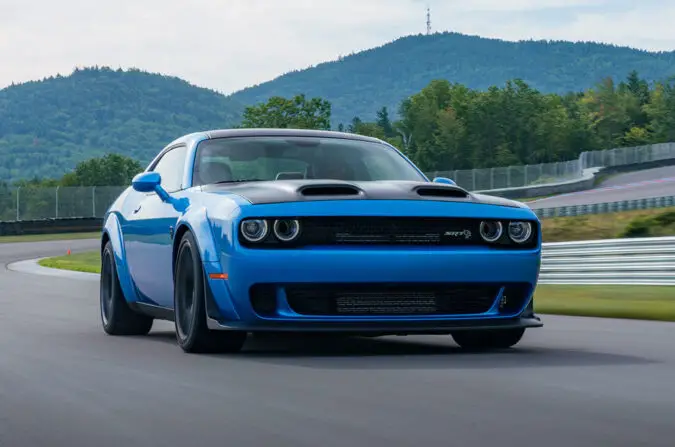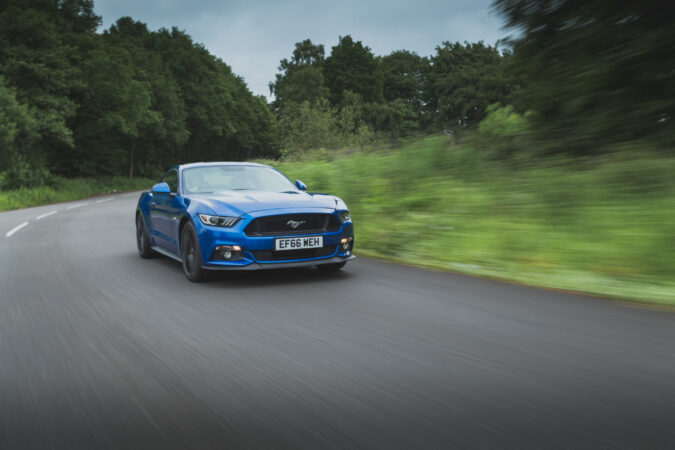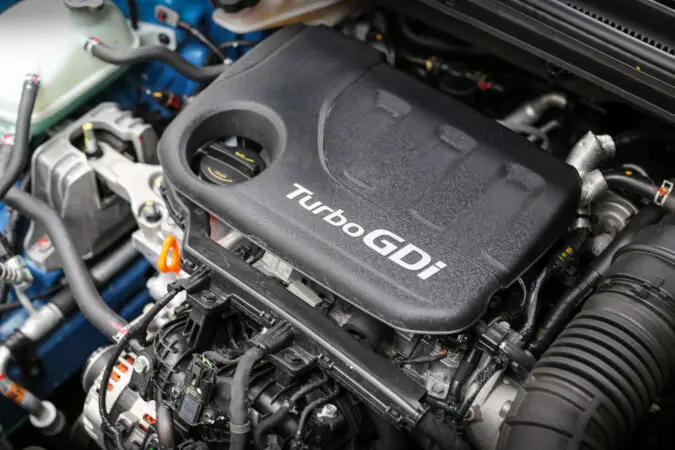We all know what horsepower is: that’s the good stuff that determines how fast a car goes. Okay, so that’s a bit of an oversimplification. But that’s why we’re here: we’re going to talk about everything horsepower in this post, including the average horsepower of a car.
We’ll also discuss what horsepower is, and what car has the highest horsepower, and we’ll talk about some cars that give you the best bang for your buck as well. Here’s our table of contents to help you find the information you need:
What Is Horsepower
If you already have an understanding of horsepower, feel free to skip this section. But if you don’t and you want to enrich your knowledge, stick around:
Horsepower is a unit measurement of power and the most popular measurement for the power output of internal combustion engines. The more scientifically accurate definition for horsepower is that it’s the rate at which work is done.
We won’t get into the details of how the term horsepower came about, as it’s confusing at best. All you need to know is that it originally came from James Watt, the Scottish engineer that founded the steam engine.
In essence, the formula to find horsepower is to multiply torque with the engine speed (revolutions per minute or RPM) and divide it by 5,252. We’ll let Jason Fenske from Engineering Explained take over as this gets quite technical:
So, let’s say you have an engine that makes a peak torque of 500lb-ft at 4,000rpm. Multiply the two numbers and you get 2,000,000. Next, divide that number by 5,252 and you arrive at 380 horsepower.
We use a dynamometer (or dyno for short) to measure a car’s horsepower. There are several different types, but in essence, they all use a rolling device to measure the power output of the engine. We’ll discuss more about dynos later.
Horsepower And Torque
Now, what’s the difference between horsepower and torque? These two figures go hand in hand in car brochures. To understand them better, you’ll need to know these three terms in the context of engineering:
- Work is the result of a force over a distance. It’s often referred to as force as well.
- Torque is similar to work, which is a measure of how much force acting on an object causes the object to rotate. In other words, it’s a measure of rotational motion force. In the context of internal combustion engines, torque is the rotating force produced by the engine’s crankshaft.
- Power is how fast this work is accomplished. The faster it is accomplished, the greater the power.
We recommend watching the video above to get a better understanding. But in a nutshell, torque is a measure of the rotational motion that the engine produces. Horsepower is about how fast it can do the work.
Confused? Don’t worry, it took us a while to get it as well when we started learning about this. But here’s the explanation in plain English: torque is how fast your car accelerates, and horsepower is how fast your car can go.
Of course, more torque doesn’t always mean your car will accelerate faster. And more horsepower doesn’t necessarily equal higher top speed either. Other factors such as weight, tire grip, and aerodynamics affect the performance of the car.
However, horsepower and torque numbers give us an idea of what we can expect. And what the car can theoretically do, although real life may be very different.
WHP vs HP
You might have come across the terms ‘whp’ and ‘hp’ before. ‘HP’ is an abbreviation for horsepower, and as we know, this is the most popular unit to measure an engine’s power output. Meanwhile, ‘whp’ stands for wheel horsepower, which is the amount of horsepower your car is putting down through the wheels.
The thing about internal combustion engines is that power needs to go through a flywheel, then a transmission, and then through the driveshaft and differential, and then it reaches the wheels. This process is necessary, but it results in parasitic loss or more accurately referred to as drivetrain loss.
When carmakers mention horsepower, usually they’re referring to the amount of horsepower that the engine produces at the flywheel. But the actual amount that your car uses to propel itself is much lower thanks to drivetrain loss.
This is mostly due to friction, which is the resistance that an object encounters when moving over another. Additionally, the engine also experiences parasitic loss from accessories such as the A/C compressor and alternator. These devices also sap power from the engine, further reducing the amount of horsepower the wheels actually receive.
Now, let’s talk about how we measure horsepower and wheel horsepower:
Average Horsepower Of A Car: Measuring Horsepower With A Dyno
As mentioned, engineers use a dynamometer to measure the power and torque output of a car. There are several different technologies, but there are two main types: an engine dyno and a chassis dyno.
An engine dyno attaches the engine’s flywheel to measure the engine’s horsepower and torque output at the flywheel. Since it’s measured before any parasitic power loss occurs, this number will always be higher than the one produced from a chassis dyno.
Carmakers typically use this number in their brochures, as it’s higher and makes their cars look good. And engine dynos are usually only used by carmakers, as it’s quite difficult for the average person to take their engine out and attach it to a dyno.
Meanwhile, a chassis dyno measures the car’s wheel horsepower. As mentioned, there are several technologies. But the methods are the same: put the car on a set of rollers, tie it down, and then press on the pedal as hard as possible. The machine will find the horsepower number for you.
The horsepower and torque figures from a chassis dyno will always be lower. That’s because it measures horsepower at the wheels after the parasitic loss has occurred. Many people often refer to this as the “true” horsepower of a car, as it’s the one you can actually use.
A chassis dyno is typically used when enthusiasts want to tune their cars after making modifications. You can also do it just for fun to measure your car’s horsepower, but it will set you back around $150 per hour to use the dyno.
Average Horsepower Of A Car
So, time to answer your question: what’s the average horsepower of a car? The answer would depend on the type of car, and the period of the car. Modern cars have much more power on average than older cars.
However, if we want to generalize, the average horsepower of a car nowadays is around 240 horsepower or thereabouts. Some cars—particularly smaller and lower trim ones—are lower. And some are higher, such as sports cars and trucks.
Average Horsepower Of A Car In Each Segment
It’s probably easier to answer this question by looking at each segment. Here’s a look at the average horsepower of a car according to its size:
- Compact cars usually have around 130 horsepower.
- Mid-size hatchbacks and sedans usually have around 170 horsepower. Although they usually have a higher-performance model that makes around 200 horsepower on average.
- Full-size sedans are around 200 horsepower on average, although they typically have a turbo or six-cylinder version that makes around 280 horsepower or more.
- Compact crossover SUVs make 200 horsepower on average.
- Mid-size SUVs produce 280 horsepower on average, although lower trims with less horsepower are usually available.
- Full-size SUVs usually make around 400 horsepower, necessary to lug around the weight of the car.
- Compact trucks are a very small segment and average around 200 horsepower.
- Full-size trucks usually make around 350 horsepower, although high-performance versions can have up to 500 horsepower.
- Heavy-duty trucks make around 400 horsepower on average. Again, high-performance versions are usually available.
- Minivans typically make around 250 horsepower.
Again, the number can vary greatly depending on the make and model. But it should give you a good idea of how much horsepower you can expect each car segment to have.
Cheap High Horsepower Cars
At this point, you’re probably wondering if any cheap cars offer high horsepower. And yes, there are quite a lot of them. Buying used will probably get you the most bang for your buck.
However, there will be too many of them to list and we don’t have the time to talk about their reliability either. Not to mention, availability will vary. So, let’s take a look at cars that are still in production instead:
1. Toyota GR86/Subaru BRZ
This isn’t the most powerful car you can buy. However, if you’re looking for a mix of fun, a decent amount of horsepower, tuning potential, and affordability, this is the one to go for.
We’re talking about the new Toyota GR86 and Subaru BRZ with the ZN8/ZD8 chassis code. The previous ones—ZN6/ZC6 chassis code—are fun, relatively fast, and cheap sports cars as well. They had a 2.0L boxer-type four-cylinder engine making 200 horsepower and had great driving dynamics.
However, the old ones had a weird torque band. The torque would dip at around 3,200rpm. And peak horsepower would only come at around 7,000rpm.
This meant you always need to rev the car to the redline to get the most performance and fun out of it. And the weird torque dip also resulted in a car that didn’t feel as fast as the numbers suggest. I kid you not when I say a standard 1.5L MINI Cooper feels faster than the old GT86.
However, the new GR86 and BRZ now come with a 2.4L engine. Thankfully, still naturally aspirated which keeps cost and weight at a minimum. The new engine still has a torque dip at around 4,500rpm, but it’s much less dramatic, and it makes significantly more torque.
Horsepower still peaks at 7,000rpm, but the new 2.4L engine now makes up to 232 horsepower. So, the new car now feels faster than before. And if that’s not enough, the GR86/BRZ platform has plenty of tuning potential.
Both the GR86 and BRZ cost around $28,000, but this is the recommended MSRP from the manufacturers, and dealer prices may be higher. Note that a used GT86 (or Scion FR-S up until 2016) and a BRZ are also still over $20,000 in the used market.
2. Chevy Camaro 1LT
If you want the best bang for your buck, you have to look at the cars made in the good ol’ US of A. After all, it’s the country that invented the muscle car; performance cars that are synonymous with great power at an affordable price.
We start with the Chevy Camaro. Specifically, the 1LT trim, which is the second cheapest trim available. This is one of the most basic Camaro models you can buy. There is a cheaper model, which is the 1LS, but that’s only available with a turbo 2.0L four-cylinder engine.
Do you want that? Do you want an iconic American muscle car with a 2.0L turbo engine? Have you no shame? Anyway, it’s fine if you want that. But the 1LT trim gives you the option to have a 3.6L V6 engine. And it’s available with either a 6-speed manual or an 8-speed automatic transmission.
The 2.0L turbo makes 275 horsepower, but the V6 will bring that figure up to 335 horsepower, albeit with slightly less torque. You can’t go wrong with either of them, but we prefer that V6 just because.
MSRP starts at around $27,000, and the V6 upgrade will cost you about $2,000 more. Standard equipment includes 18-inch aluminum wheels, a rear vision camera, and Chevy’s 8-inch touchscreen infotainment system with Bluetooth. Nothing too fancy, but hey, it’s pretty cheap.
3. Dodge Challenger/Charger
Of course, Chevy’s not the only American carmaker that still offers cheap high horsepower cars. Dodge still makes both the legendary Challenger and Charger. If you don’t know the difference, you can learn more in our post here.
The gist of it is that the Charger used to be the bigger sibling with more power and more equipment. But that was in the old muscle car days of the ’60s. Nowadays, the Charger is a four-door muscle car, whereas the Challenger remains a two-door muscle car.
Unlike the Camaro, Dodge’s offerings come with a 3.6L Pentastar V6 as standard. No 2.0L turbocharged nonsense here. However, they start at around $30,000 for the Challenger and $32,000 for the bigger Charger. And power is slightly lower, at 303 horsepower.
The Pentastar is known to be quite reliable and durable. So, it’s a good choice overall. However, the Camaro 1LT still represents better value in terms of horsepower. But if you’re willing to splurge, the ever-so-popular R/T trim comes with a V8 as standard and starts at a fairly reasonable $39,780 (Challenger) and $42,780 (Charger).
The R/T is the one we’d go for. But if you don’t have the cash, the GT trim which starts at $33,940 (Challenger) and $35,345 (Charger) represents good value. You get a leather steering wheel, keyless entry, and 20-inch wheels as standard.
The SXT and GT trims are also available with all-wheel drive, which could come in handy for those of you who live in regions with harsh winters.
4. Ford Mustang GT
As you probably know, the Mustang is available with a 2.3L EcoBoost engine, which is a four-cylinder turbo making 310 horsepower. You also probably know that Ford got a lot of backlash for fitting a turbo-four engine in a Mustang. It’s sacrilege and an insult to the Mustang nameplate.
However, if you see the Mustang as a sports car rather than a muscle car, the EcoBoost is a great engine. It’s probably not going to be the most exciting engine you’ll ever drive, but it’s a good engine for a sports car.
We’d still recommend the Mustang GT if you can though. The 5.0L Coyote V8 is arguably Ford’s finest engine; it’s characterful, powerful (450 horsepower in new models), and one of Ford’s more reliable engines.
The GT also starts at a very reasonable $39,440. While actual prices may be higher, we still think it’s a great bang for your buck. Maybe we’re a bit biased here, but you can’t argue that there’s a certain charm to V8 Mustangs.
FAQs About Average Horsepower Of A Car
Got any more questions about the average horsepower of a car and horsepower in general? Enrich your knowledge with these answers to frequently asked questions:
What Is Horsepower
A horsepower is a measurement unit of the rate at which work is done, usually used to measure the power output of an engine.
What Car Has The Most Horsepower
The Rimac Nevera is currently the most powerful road-going car, with a staggering 1,813 horsepower from its four-motor system. If we’re talking about internal combustion engines, then the crown goes to the Bugatti Chiron with its 1,479 horsepower W16 engine. Its Super Sport variant makes slightly more, but that’s not going into production so we won’t take that into account.
What Is BHP Car
Brake horsepower is the horsepower of a car after taking into consideration friction between a car’s tires and the road. This means the number will always be smaller than horsepower. It’s similar to wheel horsepower, but bhp doesn’t take the power loss from auxiliary components into account.
How Fast Can A Car Go
Most modern cars have a top speed of around 130 to 140mph. And even performance cars are usually limited to 155mph due to tires and aerodynamic limitations, except for supercars that can easily reach 180+mph. Meanwhile, full-size trucks usually top out at around 120mph.
What Is A Good Horsepower
We think 180 horsepower is enough for small to mid-size cars. Larger sedans, SUVs, and trucks, typically need at least 250 horsepower to feel fast.
What Is PS In Car
PS stands for PferdStarke, which is German for horse strength. This is the metric measurement for horsepower and is equal to about 98.6% of the horsepower measurement in America. Because of the slight difference, you’ll find the PS figure will be slightly higher.
What Is Considered Good Torque In A Car
This depends on the car size. You’ll find somewhere around 150lb-ft of torque is enough in smaller cars, while mid-size cars need at least around 180lb-ft of torque to feel fast. Meanwhile, large trucks and SUVs need at least around 250lb-ft of torque. But ideally, they should have at least 350lb-ft of torque if you want to tow and/or go offroading.
How To Increase Horsepower In A 4 Cylinder Car
Some of the simpler ways to increase horsepower are to install a cold air intake, install a performance exhaust system (a cat-back exhaust strikes a good balance between price and results), and an ECU tuning. Turbochargers will give you massive gains, but they’re expensive and sometimes will require some fabrication.
Does More Torque Mean Faster Acceleration
Theoretically, it should, as more torque means there’s more force. However, other factors also affect how fast a car accelerates. This includes gear ratios, weight, aerodynamics, grip from the tires, and even the wheel and tire size can affect acceleration.
Average Horsepower Of A Car: Final Thoughts
So, what’s the average horsepower of a car? While the answer may vary depending on who you ask, the average horsepower of a car these days is around 240 horsepower. This is the average horsepower of cars in the US and varies greatly in other countries.
In many developing countries—such as South East Asian countries—the average number is more something like 180 horsepower as there are more affordable options with smaller horsepower figures. This figure will also vary greatly once you start looking at a more specific segment.
Regardless of what the average is, most modern cars have enough horsepower these days to get them going. Not all will be hilariously fast and put a grin on your face but in most cases, modern cars have enough horsepower to lug their weight around and you won’t feel like you need more. Unless you’re used to hilariously fast cars.
Thanks to advancements in technology and manufacturing processes, cars are leveling out these days in terms of power and torque output. So, don’t worry too much about the power and torque figure when buying a car. Instead, take them for a test drive and see if you like the whole package.
Is the engine exciting? Does the transmission shift smoothly? Does the car have all the gadgets and toys that you need? Will it be a reliable car for at least the next five years? Those are the things that matter these days. In any case, we hope that this post has been fun and educational for you.






